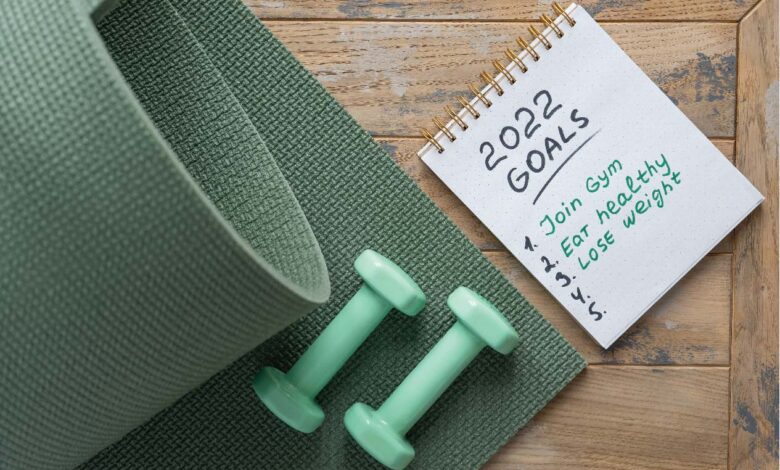New Year’s Resolutions That You Can Keep

Everyone starts the New Year with the best of intentions: this is the year you are finally going to get organized, lose weight, or improve your finances. Setting New Year’s resolutions can be a great way to focus your priorities and establish habits and changes that will set you up for better results this year.
But the statistics show that many people have a hard time following through with their goals. The University of Scranton’s research study indicates that 80% of New Year’s resolutions fail.
Are you starting to lose motivation, even though we are only a few weeks into the New Year? The key to successful goal achievement is to create the right resolutions and design a system that keeps you on track going forward. Here are a few tips to help you be successful with your resolutions in 2022:
Focus on Habits, Not Results
You are setting New Year’s resolutions because you want to achieve specific results. For example, you might have a goal to lose weight. But simply saying that you are going to lose a certain amount of weight isn’t enough preparation to ensure that you take the steps that lead to these results.
Instead, you need to create a realistic plan that sets you up for success. Then, when you develop habits that contribute to weight loss, you can focus on the daily activities, and the weight loss will naturally fall into place.
Examples of effective New Year’s resolutions to help with weight loss include:
- Daily goals for macro intake
- Weight lifting for 40 minutes, at least 4 days a week
- 3x per week cardio sessions
- Drinking at least 8 glasses of water per day
- Avoiding refined sugar and flour, except for your cheat day on Sunday
Evaluate your ongoing habits to find the most effective changes you can make to achieve your desired results. As you are getting these New Year’s resolutions, work to make them SMART:
- Specific: A clear goal without vague language.
- Measurable: Built-on tracking to show the progress you are making.
- Achievable: Small- to mid-sized steps that lead to the desired results.
- Relevant: Make sure the resolution aligns with your big stretch goals.
- Time-Bound: Set a timeline to reach the target results.
Also, keep in mind that you can always adjust these goals as your situation changes. For example, you might start with New Year’s resolutions and find that you need to tweak certain aspects to fit your lifestyle better.
Write Down Your Plan
Now that you have specific New Year’s resolutions, it’s time to design a plan. First, map out your daily, weekly, and monthly milestones, including habits and action steps. Writing down the details of your goal is a powerful way to look at the bigger picture and keep you on track.
As you write your plan, identify roadblocks or potential issues that could hinder your success. For example, do you know that specific habits tend to get in the way of your consistency? Not only should you identify and write down these issues, but also create a plan to help you avoid them.
For example, if you find it hard to stay on track with your eating habits because you don’t have time to cook during the week, then schedule a time to work on meal prep on Sunday. In addition, fill the fridge with healthy, prepared dishes to help you avoid ordering something unhealthy on Door Dash. Also, have a backup plan, such as a few frozen meals to throw in the Instant Pot or a pre-planning salad order at a nearby restaurant for takeout.
Build in Baby Steps
Don’t expect your habits to change overnight. Instead of taking drastic steps, ease your way into the new lifestyle. If you haven’t been working out for a long time, then it isn’t reasonable to say that you are going to start exercising 5 days a week for 90 minutes each session. If you’ve been eating fast food every day, then it’s too big of a change to switch to salads at every meal.
Look for ways that you can make incremental changes. These baby steps are the foundation to creating life-long changes that lead to lasting results in the future. Create a plan and design the environment around slow progress that leads to the successes you desire.
For example, in the beginning, your exercise goal might be to put on your workout clothes and walk a mile. As this routine becomes more of a habit, you can increase the frequency, length, and intensity of your walking. Eventually, you will be running and enjoying the workout since you’ve built up your endurance and strength.
Create Habit Chains
Build habit chains to reduce or eliminate the decision-making friction you feel around your action steps. First, choose a habit that is already in your life, then link the new actions to the current habit.
One example is preparing in advance for your early morning workout. When you are brushing your teeth before bed, set out your workout clothes to eliminate this small decision in the morning. Fill your water bottle and set your keys and gym membership card by the door. Linking these evening activities to an existing habit (brushing your teeth) creates a plug-and-play system that increases your likelihood of success.
Hold Yourself Accountable
Find a friend, personal trainer, workout buddy, or family member who can help you stay accountable. You need someone who you can report to about your progress. This accountability gives you encouragement and validation when you are consistent with your New Year’s resolutions. At the same time, you have someone who can offer encouragement when you feel unmotivated.
Tapping into a community of other like-minded people can be a great way to stay accountable for your new goals. So join a new gym where you can meet others who are working on similar New Year’s resolutions. Join Fitness Nation today to set yourself up for a healthy, fit 2022.




